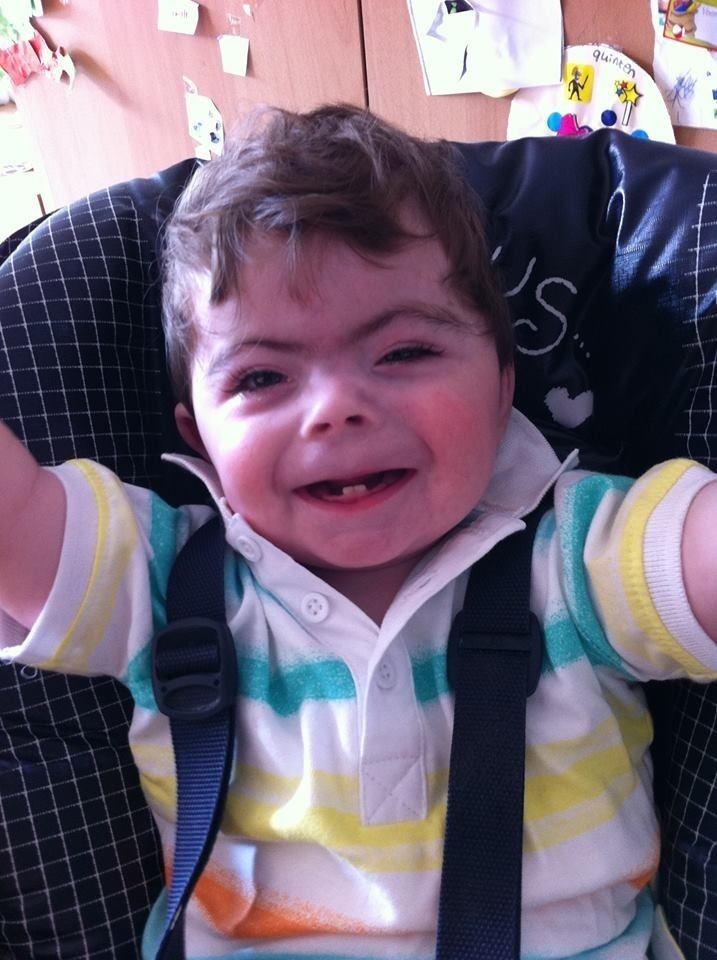Synonyms Bushy Syndrome ICD-10 Q87.1 (ILDS Q87.170) OMIM 122470 | Specialty medical genetics ICD-9-CM 759.89 DiseasesDB 29651 | |
 | ||
Cornelia de Lange Syndrome (CdLS) is a very rare genetic disorder present from birth, but not always diagnosed at birth. It causes a range of physical, cognitive, and medical challenges and affects both sexes equally. The syndrome is named after Dutch pediatrician Cornelia Catharina de Lange, who described it.
Contents
It is often termed Bushy Syndrome and is also known as Amsterdam dwarfism. It is a genetic disorder that can lead to severe developmental anomalies. It affects the physical and intellectual development of a child. Exact incidence is unknown, but it is estimated at 1 in 10,000 to 30,000.
Causes
The vast majority of cases are due to spontaneous genetic mutations.
It can be associated with mutations affecting the cohesin complex.
Multiple genes have been associated with the condition. In 2004, researchers at the Children's Hospital of Philadelphia (United States) and the University of Newcastle upon Tyne (England) identified a gene (NIPBL) on chromosome 5 that causes CdLS when it is mutated. Since then, additional genes have been found (SMC1A, SMC3 and HDAC8) that cause CdLS when changed. There are likely other genes as well. Researchers hope to gain a better understanding of why CdLS varies so widely from one individual to another and what can be done to improve the quality of life for people with the syndrome.
The latter two genes seem to correlate with a milder form of the syndrome.
In July 2012, the fourth “CdLS gene”—HDAC8—was announced. Many parents and professionals have questions about this latest finding and what it means. HDAC8 is an X-linked gene, meaning it is located on the X chromosome. Individuals with CdLS who have the gene change in HDAC8 make up just a small portion of all people with CdLS.
Evidence of a linkage at chromosome 3q26.3 is mixed.
Features and characteristics
Following are the features and characteristics that help in spotting this disorder:
Children with this syndrome are often found to have long eyelashes, bushy eyebrows and synophrys (joined eyebrows). Body hair can be excessive and affected individuals are often shorter than their immediate family members. They present a characteristic facial phenotype and is recognizable with the Facial Dysmorphology Novel Analysis (FDNA) technology
CdLS can give rise to its own array of complexities. Children with CdLS often suffer from gastrointestinal tract difficulties, particularly gastroesophageal reflux. Vomiting, intermittent poor appetite, constipation, diarrhea or gaseous distention are known to be a regularity in cases where the GI tract problems are acute. Symptoms may range from mild to severe.
CdLS may include behavior problems, including self-stimulation, aggression, self-injury or strong preference to a structured routine. Many children with CdLS exhibit autistic-like behaviors.
Behavior problems in CdLS are not inevitable. Many behavior issues associated with CdLS are reactive (i.e., something happens within the person's body or environment to bring on the behavior) and cyclical (comes and goes). Often, an underlying medical issue causes a change in behavior. Once the medical issue is treated, the behavior diminishes.
Diagnosis
The diagnosis of CdLS is primarily a clinical one, based on medical signs that are evident in a medical history, physical examination, and laboratory tests. Since 2006, testing for NIPBL and SMC1A has been available through the University of Chicago. This is best accomplished through a referral to a genetics specialist or clinic.
CdLS is thought to be underdiagnosed and frequently misdiagnosed.
Treatment
Often, an interdisciplinary approach is recommended to treat the issues associated with CdLS. A team for promoting the child's well-being often includes speech, occupational and physical therapists, teachers, physicians and parents.
Support
The Cornelia de Lange Syndrome (CdLS) Foundation is a nonprofit, family support organization based in Avon, Connecticut, that exists to ensure early and accurate diagnosis of CdLS, promote research into the causes and manifestations of the syndrome, and help people with a diagnosis of CdLS, and others with similar characteristics, make informed decisions throughout their lives.
History
The first documented case was in 1916 by Winfried Robert Clemens Brachmann (1888–1969), a German Physician who wrote about the distinct features of the disease from his 19-year-old patient, followed in 1933 by Cornelia Catharina de Lange, a Dutch pediatrician after whom the disorder has been named. CdLS was formerly known as Brachmann-de Lange Syndrome.
